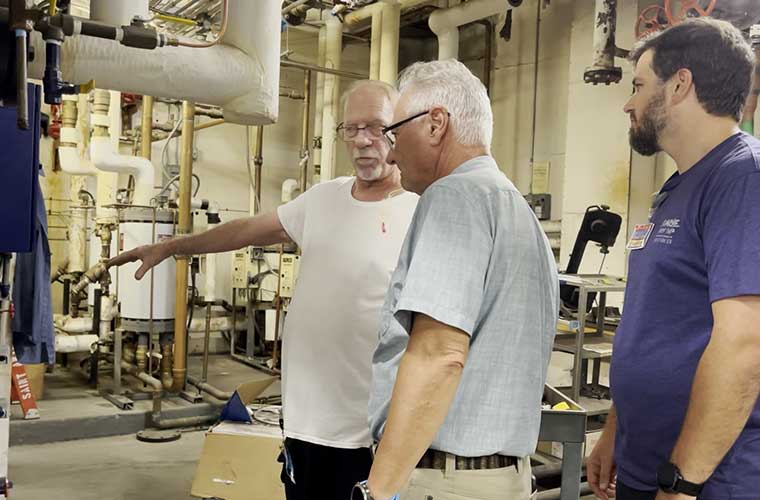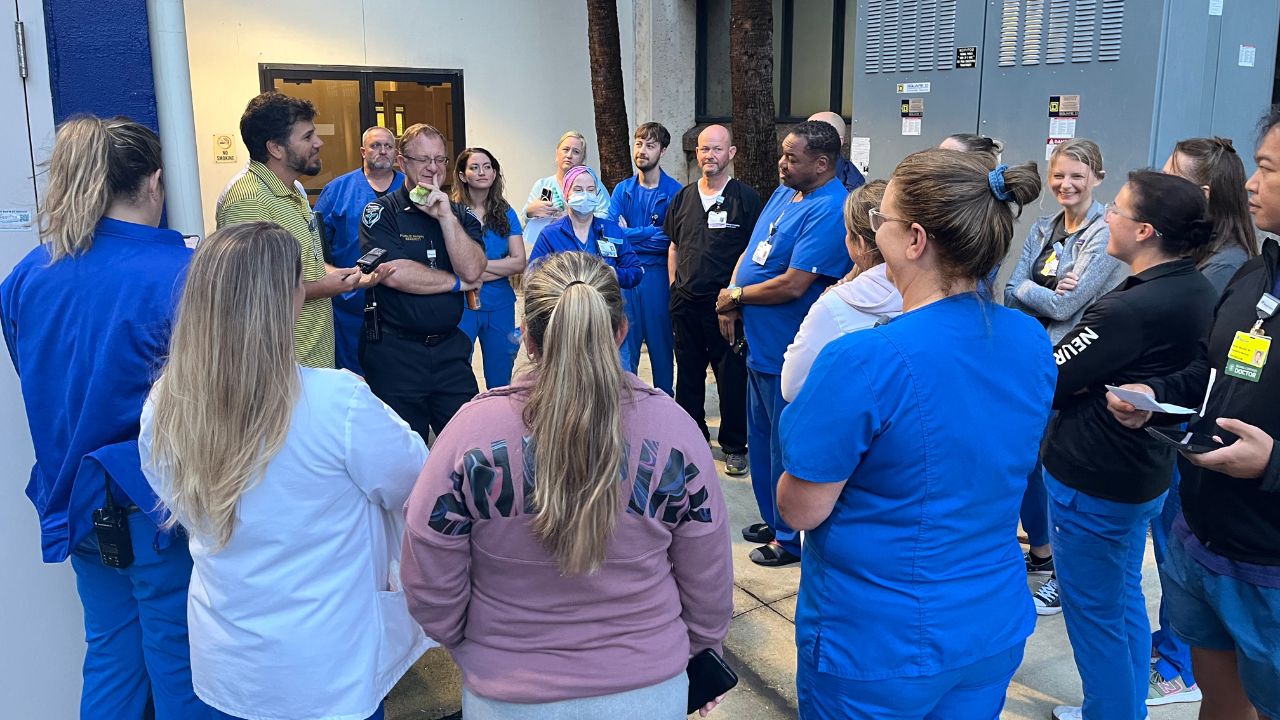St. Anthony's Hospital's Hurricane Milton Test
In the days and hours leading up to Hurricane Milton, St. Anthony's Hospital teams had looked at wind and surge, staffing and supplies. As the Category 3 storm landed 50 miles to the south late Wednesday, Oct. 9, the teams prepared to hunker down and ride out the storm. Little did they realize the challenges still to come to keep safe the hospital’s 361 patients and 800 team members and physicians.
A series of events – interrupted water service; uncertain sewage capacity; offline generators; and an internet failure that shut down communication, medical records and computer systems – would keep the team working through the night to ensure patient safety and keep the hospital operating.
“It's one thing to suffer any one of the events on an individual basis,” said Scott Smith, St. Anthony’s president since 2016. “But to have one type of failure followed 30 minutes, an hour later by another failure, followed by 30 minutes an hour later, another failure, and each one of those being significant was really a challenge for the team.”
Planning for Hurricane Milton, the second hurricane in less than two weeks to hit the region, had begun the weekend before at BayCare. By Monday, Oct. 7, the entire health system moved to Code Green to prepare for the storm.
BayCare began evacuation procedures at 8:45 a.m. on Oct. 7 at Morton Plant North Bay Hospital in New Port Richey, which sits in a mandatory evacuation zone. BayCare also made plans to close Morton Plant Hospital’s freestanding Bardmoor Emergency Center in Largo on Wednesday, Oct. 9. It began staffing plans for St. Anthony’s and its other hospitals. And BayCare also made two of its properties available to support the state’s hurricane response.
St. Anthony’s, in downtown St. Petersburg between Tampa Bay and the Gulf of Mexico, was bracing for high winds and rain. But at 52 feet above sea level, the hospital wouldn’t be vulnerable to the flooding that had impacted so much of the city during Hurricane Helene. By Wednesday morning, team members reporting for day shift knew they would be staying until the storm was over. Night shift reported early so they would be safely ensconced inside when the storm hit.
As the winds picked up, so did the impact. A mechanical closet was breached and water flowed in. The hospital’s central supply area began to flood. The team began to report several other leaks throughout the hospital that required moving patients to different rooms. But it wasn’t until 6 p.m. when city officials called to warn they were shutting down two sewage treatment plants, that the hospital began to experience fresh challenges. Then at 10:30 p.m., the city called again: There had been a water main break. The hospital would be without water by midnight. Before word could spread, the clinical teams were already realizing the problem.
“We discovered the water pressure problem in the middle of a dialysis treatment for our patient. So obviously that's very concerning,” said Jasmine Nicholas, a registered nurse who is director of patient services at St. Anthony's. “We were able to complete the treatment using other processes. But we knew that we could no longer do dialysis or any surgical procedures.”
The team also immediately realized something else. They couldn’t do basic activities for patients, from bathing to cleaning rooms to using the bathroom. The response was swift. Prior to midnight, managers, physicians and all available hands had distributed 2,000 bottles of water and portable commode liners and bathing wipes.
Meanwhile, Duane Traister, St. Anthony’s facilities manager, and the facilities team tapped a legacy well on site to keep the hospital’s chiller online, providing air conditioning essential in care settings to maintain supply integrity and sterile procedural environments. Without potable water, Food and Nutrition Services shut down soft drink and coffee machines and pivoted to an all-continental breakfast for patients and team members. They planned bagged lunches and, eventually, a food truck for Thursday night dinner for everyone in the hospital.
Then the next challenge arrived: About 3:15 a.m. Thursday, as Hurricane Milton moved east across the state, the hospital’s internet crashed. Nurses no longer had access to patient electronic records; desktop phones wouldn’t work; computers couldn’t talk to each other. Leaders pulled out the handheld radios. “(They) definitely worked for emergent situations,” said Mike Shields, St. Anthony’s operations director, “but (it) made communication difficult.”
And in the final surprise, about a half-hour later, two of the hospital’s three generators stopped after an electronic monitor failed to communicate the need for more fuel. Lights went out in areas throughout the hospital. Many hospitals depend on generators during storms to avoid power blips that can damage equipment and interrupt vital patient support. The team was quickly able to shift the hospital back to a Duke Energy feed that had not been interrupted.

As the sun began to rise Thursday, the winds had died down, but communications were still offline. To use their cell phones, Smith, Shields and other team members climbed seven flights to the top of the Jackson Street Garage to talk with BayCare colleagues and state and local officials.
Hospital operational meetings that are usually held online reverted back to in-person, with managers and hospital leaders huddling outside to share information. Messages were drafted by hand, then walked by managers to each unit to quickly disseminate information.
As quickly as everything began to break down, systems began to come back. By 9 a.m. Thursday, the sewage treatment plants were back in operation. City water came back online at 9:30 a.m. It was not potable but could keep the chiller and other systems running.
“A little bit of relief started to come forward,” Smith said. Once the storm had passed, “we started to see BayCare system resources that were being flooded at us.” That included a morning surprise visit from BayCare President and CEO Stephanie Conners, whose arrival was met with cries of relief and hugs. “That was a little bit of a crescendo moment for me because it was almost the all clear that we had made it through the worst of everything that we were going to have to deal with.”
For Nicholas, the director of patient services, the night was a validation of what makes BayCare and St. Anthony’s extraordinary. “Everything that could go wrong went wrong,” she said. “(But) everyone was just okay and (they) were very calmly asking questions. They all had a lot of trust in St. Anthony's Hospital. They had a lot of trust in BayCare and what our processes were, and they felt very comfortable that we were going to get through it.”
After just six months in his job as the hospital’s operations director, Shields said he couldn’t have asked for a better team to ride out the storm with. “I heard a lot about the (St. Anthony’s) culture and just the teamwork,” he said. “I'm very proud of the way that team stepped up and all answered the call.”
Most importantly, Smith said, all patients, team members and physicians were safe.
For more information: St. Anthony's Hospital

